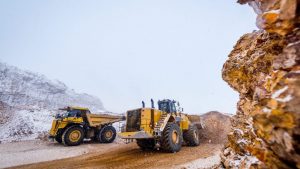A recently completed new roof installation on a Toronto cosmetic factory was more than a standard roofing job.
TORONTO
A recently completed new roof installation on a Toronto cosmetic factory was more than a standard roofing job.
Not only was it a costly undertaking, the project was a complex challenge for the owners, structural engineer Halcrow Yolles and contractor Semple-Gooder Roofing.
Twelve roofers from the contractor spent five months erecting a cold applied three-ply Burmastic roof over the corrugated steel deck of the 260,000-square-foot facility.
Halcrow Yolles was originally hired by the owner, a cosmetic manufacturing firm, to conduct a physical condition assessment of its 25-year-old plant.
During the assessment, several corroded areas on the roof were discovered. Judging by the building’s age and structure, the engineers believed phenolic foam insulation was the source.
Used extensively throughout North America in industrial buildings and warehouses from the early 1980s to the early 1990s because of its High R value and low price, phenolic foam has major drawbacks, says Halcrow Yolles project manager Michael Lembke.
“When it gets wet, it releases an acidic compound which acts as a corrosive element.”
The engineers’ suspicions were confirmed by an infrared thermography review, a series of moisture probes of 12 different areas of the roof and exploratory openings.
“You could see the corrosion.”
Presented with that evidence, the owner had two choices, either do a limited repair on the troubled areas or install an entire new roof system. The latter option was chosen.
But the very nature of manufacturing cosmetics required that a cold applied roof system be used, says Lembke.
“Cosmetic compounds and formulas are very sensitive and the odours from a hot applied roof system would contaminate those formulas.”
While the roof surface is flat, the installation of the new roof, the removal of the phenolic foam and its replacement with polyisocyanurate foam had to be carefully sequenced.
“The plant is comprised of several sections with varying heights,” says Lembke.
Other precautions had to be undertaken as well. Over the midnight hours, a subcontractor would erect tarps on the underside of the deck to contain dust and ensure no debris would fall to the floor when the roof work began the following morning. Machinery on the shop floor also had to be tarped.
“When it came time to take down those tarps, it had to be done very carefully in case there was debris in them.”
Adhesives were also used in the application instead of screws to avoid penetrating the roof.
In the end, the cost was probably 30 per cent to 40 per cent more expensive than a hot applied system would be for a similar sized facility, say Lembke.
If there are lessons to be learned from this project, it’s that owners need to carefully consider what type of building roof they want before starting construction, he says.
“And if you have a building similar to this one, there’s a good chance it has phenolic foam insulation.”










Recent Comments
comments for this post are closed